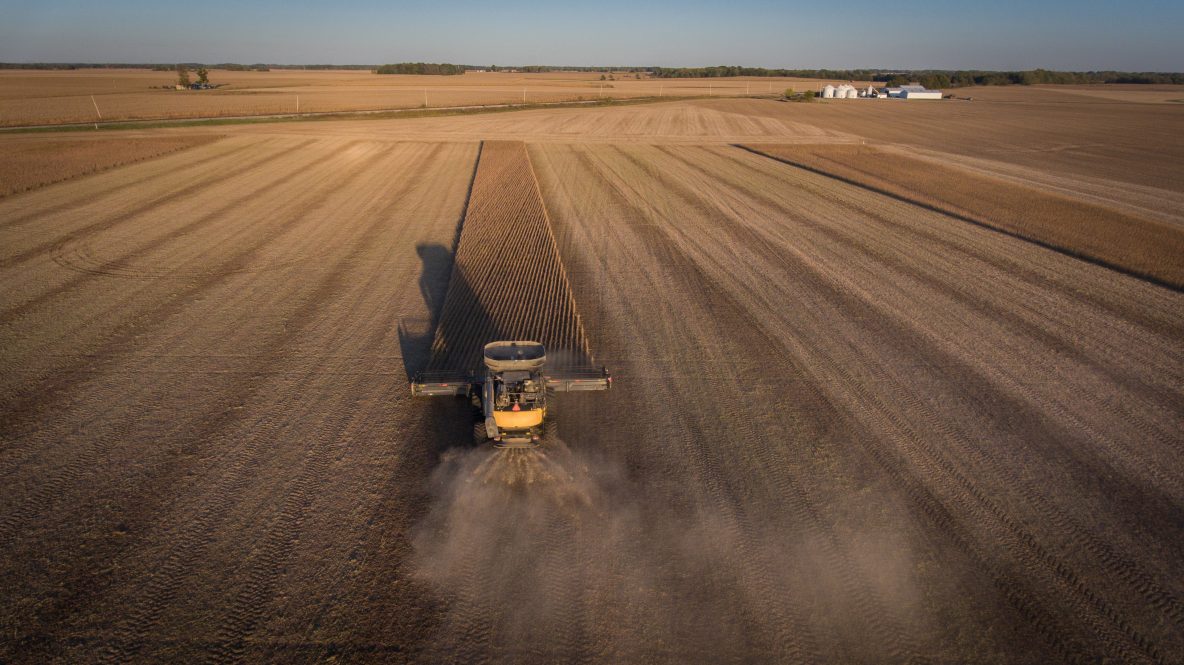Supply chains and inflation are topics on the minds of many consumers. Shortages of products ranging from building materials, microchips, baby formula, to pharmaceuticals show how our day-to-day lives rely on global supply chains and the ever-increasing prices of the products they transport.
For agricultural goods especially, UConn researcher Sandro Steinbach, an assistant professor in the Department of Agricultural and Resource Economics in the College of Agriculture, Health and Natural Resources, warns that food supply chain bottlenecks could worsen. Yet, he says, despite clear signs of the looming crisis, little serious action is being taken. His recent research has been published in the International Agricultural Trade Research Consortium Working Papers Series.
The pandemic created a unique set of circumstances for the shipping industry, including a shortage of containers, which you wrote about last year. What is the current state of the shortage?
Getting a shipping container into the US costs about $6,000, while sending a container out of the United States costs $600, so shipping companies have an incentive to get empty containers fast back to Asia.
Those empty containers could carry agricultural products, but they are not filled, because the economic incentives are such that we have more durables (e.g., furniture, electronics, and appliances) coming into the U.S. If you look at the trade balance, it is getting more unbalanced, especially over the last couple of months. In January 2022, 67% of all the containers that left U.S. ports were empty, and essentially, we exported large amounts of cold air.
This is a significant development, particularly for agriculture, which is highly dependent on foreign markets.
What kinds of measures are underway to address these problems for exporters?
U.S. exporters benefited from low freight rates for a long time. The container shipping disruptions and other factors mean that if exporters can’t export their goods, it puts pressure on domestic players and inventories. Some of our maritime infrastructure is laid out for the last century, but not for a highly integrated modern economy.

The Biden administration allocated about $17 billion to cope with the infrastructure problems, a considerable amount of money. The USDA also committed additional funding to reactivate Oakland as an export location.
To see how this plays out will take a while, because any adjustments or investment into infrastructure takes a long time to materialize. For instance, they expanded the Port of Los Angeles years ago, and it took several years to go through the environmental review process. If we are talking about resolving issues that we are having right now, these investments are not going to do a lot.
Fuel prices are another factor adding to the inflation spiral. Prices are now somewhere near $3 more per gallon than last year, which adds to cost, a real issue for the trucking industry.
In the Midwest, 20% of all agriculture exports go by boat, 20% by rail, and almost 60% by truck, and that’s a huge amount for some crops. There’s a high dependency on trucking, because the rail system was cut back and rail is less flexible. Flexibility is the beauty of trucks.
That’s one motivation to potentially get out of gas and into electric trucking. Still, there are no trucking companies that offer electric vehicle solutions for agriculture on a large scale. Again, it might take a bit longer for these adjustments.
How are these disruptions impacting U.S. agriculture?
We may see compounding effects soon. For instance, the Biden administration is to increase the ethanol mandate to 15%, and there’s competition on where corn is going. Is it going to feed people in Africa or feed cars in America? That’s a potential trade-off that you also see in exporting goods into lucrative markets.
There are also a lot of USDA subsidies. In some years, farmers made most of their income from subsidies, which is unreasonable because we always talk about America being an open market economy. Still, there is so much protection and market intervention going on.
Most subsidies go to the big players that usually have crop insurance, futures contracts, and other financial instruments in place to deal with the uncertainty they are facing.
Some goods are not priced accurately. I would say prices are more realistic now and reflect broader market supply and demand. The market has adjusted basically, which is terrible for many industries that have been highly oriented toward foreign markets.
Also, there have been vast buyouts of American companies from Asian companies that diversify supply chains when looking at exports. For instance, Smithfield was purchased by a Chinese company and is now exporting a significant share of its output to China.
A big issue for shipping agricultural commodities is perishability. I recently spoke with a nut company manager, and he gave a good example. In April 2021, they loaded a container that took nine months to get to Europe. This product needs a controlled environment, but delays mean the quality goes down along with the price that you’re expecting to receive. The shipment was for the European market, and by the time it arrived, it was not a B-quality product anymore. It’s a C or D or F product potentially.
There are also concerns about access and quality impacts, because exporters have limited control. Contracts can be made, but they can also be canceled. Many container contracts have been canceled in the last couple of months because shipping companies made more money sending containers back to Asia. Exporters are surrendering the ability to export a product due to the issue of access. Yet, shipping companies made the biggest profits ever. Maersk had its best quarters for a long time because the rates went up.
When talking about products like nuts, the additional inventories can’t be in storage for years because the quality and the price go down, putting pressure on the domestic market. That’s the next thing that is playing into this. There are many factors related to overproduction, and if you cannot export, it puts pressure on domestic players and inventories.
For highly-valued products, what we found is that the estimated export losses faced by the U.S. nuts and fruits industry with the container shipping disruptions are more significant than the losses from the 2018-2020 Trade War.
Few people talk about that, and should we? That’s the other question. It’s a market, should there be a policy intervention like during the Trump era? In our paper, the statistics are surprisingly clear and show something big is going on.
We have a perfect storm that could be damaging to U.S. agriculture. It’s a $10 billion storm in six months. A 20% drop in agricultural exports and their ability to get products into foreign markets is a significant loss for U.S. agriculture, and we don’t pay it enough attention.
We need more discussion on how we can help farmers deal with these challenges. And it’s not just farmers, but it’s the whole food processing industry that lost significantly.
Everything has implications. There was a spending spree; now we have inflation, an explosion of imports, and the war in Ukraine. It all comes together, becoming a massive issue for U.S. agricultural exporters and producers.
This work was supported by the National Institute of Food and Agriculture through the Agriculture and Food Research Initiative Award 2019-67023-29343.



